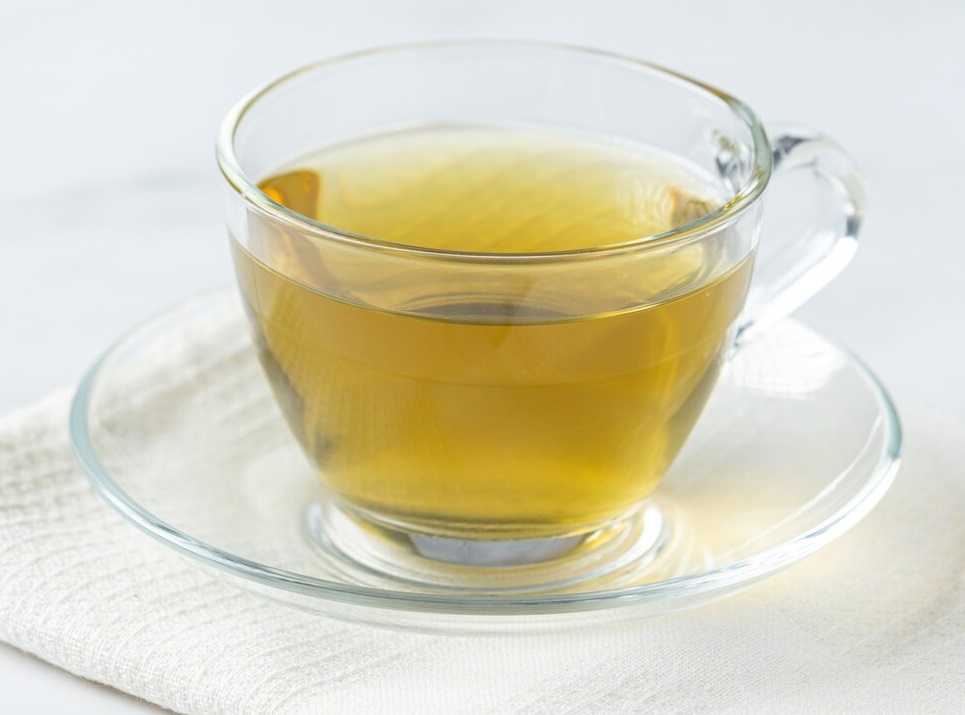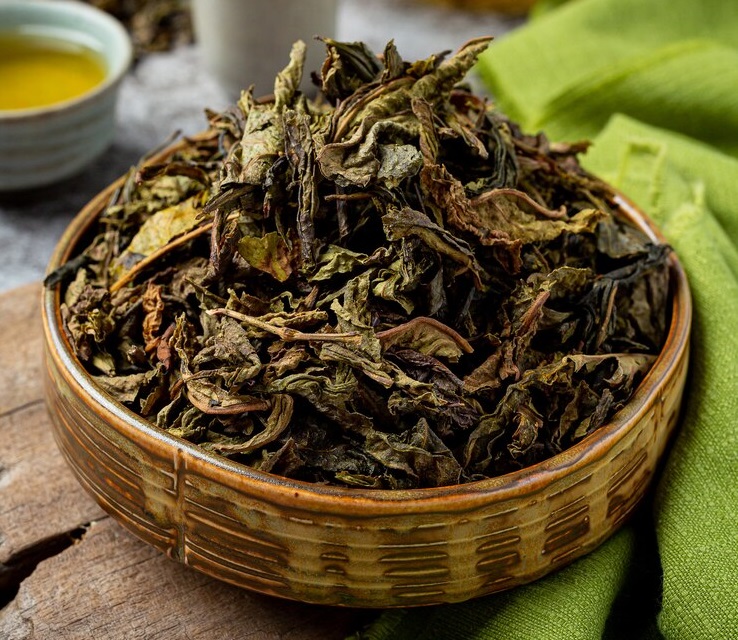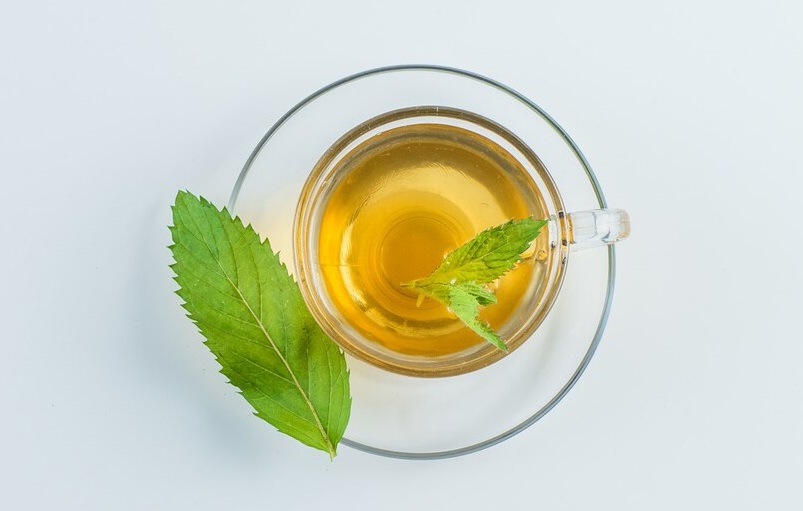
White tea, green tea, and black tea all come from the same plant, Camellia sinensis, but they undergo different levels of oxidation and processing, resulting in distinct flavors, colors, and nutritional profiles. Here’s an overview of the differences between white, green, and black tea:
Processing:
White Tea: It undergoes the least processing. The leaves are simply withered and dried, often under the sun. This minimal processing allows white tea to retain a delicate flavor and appearance.
Green Tea: The leaves are quickly heated (usually through steaming or pan-firing) to prevent oxidation, preserving the green color and fresh flavor. Green tea undergoes minimal oxidation.
Black Tea: It undergoes full oxidation. The leaves are withered, rolled, fermented, and dried. This process gives black tea its dark color, robust flavor, and higher caffeine content compared to white and green teas.
Oxidation Levels:
White Tea: Almost non-oxidized or lightly oxidized.
Green Tea: Low oxidation.
Black Tea: Full oxidation.
Flavor Profiles:
White Tea: Delicate, subtle, and often described as floral or sweet. It has a lighter taste compared to green and black tea.
Green Tea: Fresh, grassy, and sometimes slightly astringent. The flavor can vary based on the type and processing method.
Black Tea: Robust, bold, and often described as malty or fruity. The flavor can range from brisk and astringent to smooth and sweet, depending on the specific type.
Caffeine Content:
White Tea: Generally lower in caffeine compared to green and black tea.
Green Tea: Moderate caffeine content.
Black Tea: Higher caffeine content, especially in fully oxidized varieties.
Appearance:
White Tea: Leaves often have silver or white downy hairs. The brewed liquor is light and pale.
Green Tea: Leaves maintain their green color. The brewed liquor ranges from pale yellow to vibrant green.
Black Tea: Leaves turn dark brown or black during oxidation, and the brewed liquor is typically dark amber to reddish-brown.
Antioxidant Levels:
White Tea: Generally high in antioxidants due to minimal processing.
Green Tea: Retains a significant amount of antioxidants, although slightly less than white tea.
Black Tea: While it undergoes full oxidation, black tea still contains antioxidants, but the levels may be slightly lower than those in white and green tea.
Each type of tea has its unique characteristics, and personal preferences play a significant role in determining which one individuals might enjoy the most.

Black tea:
Black tea is a type of tea that is more oxidized than green, white, and oolong teas. The oxidation process, which involves exposing the tea leaves to air, leads to the characteristic dark color and robust flavor of black tea.
Here are some key aspects of black tea:
Key Characteristics:
Color: Black tea has a dark amber to reddish-brown color when brewed.
Flavor Profile: The flavor of black tea can vary widely, depending on factors such as the region, processing methods, and specific tea cultivar. Common flavor profiles include malty, fruity, spicy, and sometimes smoky. The taste can range from brisk and astringent to smooth and sweet.
Caffeine Content: Black tea generally has higher caffeine content compared to green, white, and oolong teas. However, the exact caffeine levels can vary based on factors such as brewing time and tea leaf size.
Oxidation: Black tea undergoes full oxidation, meaning that the tea leaves are allowed to fully react with oxygen. This process results in the dark color and robust flavor associated with black tea.
Popular Varieties:
Assam: Known for its malty and bold flavor, often used in breakfast blends.
Darjeeling: Grown in the Darjeeling region of India, it has a lighter and more floral flavor compared to other black teas.
Earl Grey: A black tea flavored with oil of bergamot, giving it a distinct citrusy aroma.
English Breakfast: A traditional blend with a robust and rich flavor, often enjoyed with milk.
Brewing Black Tea:
Water Temperature: 200-212°F (93-100°C)
Tea Leaves: 1 teaspoon per 8 ounces of water
Steeping Time: 3-5 minutes, but this can be adjusted based on personal preference
Health Benefits:
Black tea contains antioxidants, such as polyphenols, which may have health benefits.
It has been associated with potential cardiovascular benefits.
The caffeine content in black tea can provide a moderate energy boost.
Usage:
Black tea is commonly consumed hot, with or without milk and sweeteners.
It can be used to make iced tea, flavored with lemon, mint, or other ingredients.

White Tea:
White tea is one of the least processed and most delicate types of tea, known for its subtle flavor, light color, and minimal oxidation. Here are some key characteristics of white tea:
Key Characteristics:
Minimal Processing: White tea undergoes minimal processing compared to green, oolong, and black teas. The leaves are typically plucked and allowed to wither and dry in natural sunlight or with the aid of controlled indoor conditions.
Color: When brewed, white tea produces a pale yellow or light amber liquor. The color is much lighter than that of green or black tea.
Flavor Profile: White tea is appreciated for its delicate and nuanced flavor. It often has floral, fruity, or sweet notes. The taste can be subtle, making it a mild and refreshing choice.
Caffeine Content: White tea generally contains less caffeine compared to green and black teas. However, the exact caffeine levels can vary based on factors like the tea plant cultivar and processing.
Oxidation: White tea is the least oxidized of all the true tea types. The oxidation level is so minimal that some may consider it to be almost non-oxidized.
Types of White Tea:
Silver Needle (Bai Hao Yin Zhen): Composed of only the unopened buds, characterized by a delicate and sweet flavor.
White Peony (Bai Mudan): Includes both buds and young leaves, providing a slightly stronger flavor than Silver Needle.
Brewing White Tea:
Water Temperature: 160-185°F (71-85°C)
Tea Leaves: 1-2 teaspoons per 8 ounces of water
Steeping Time: 4-5 minutes, but this can be adjusted based on personal preference
Health Benefits:
White tea is rich in antioxidants, particularly catechins, which may have various health benefits.
It is often associated with potential skin benefits due to its antioxidant content.
White tea may have a lower risk of staining teeth compared to stronger teas like black tea.
Usage:
White tea is typically enjoyed on its own without milk or sugar to appreciate its delicate flavor.
It can be brewed hot or cold and is a popular choice for iced tea.
Some people also use white tea as a base for blending with herbs, fruits, or flowers.
Green Tea:
Green tea is a popular type of tea known for its fresh flavor, vibrant green color, and numerous health benefits. Here are key characteristics and information about green tea:
Key Characteristics:
Minimal Oxidation: Green tea undergoes minimal oxidation during processing. The leaves are quickly heated (usually through steaming or pan-firing) to halt the oxidation process, preserving the natural green color and fresh flavor.
Color: When brewed, green tea produces a light green to golden-yellow liquor. The color can vary based on the specific type of green tea and how it is processed.
Flavor Profile: Green tea offers a wide range of flavors, from grassy and vegetal to nutty and floral. The taste can vary based on factors such as the tea cultivar, growing conditions, and processing methods.
Caffeine Content: Green tea contains moderate levels of caffeine, lower than black tea. The exact caffeine content can vary based on factors like the tea type and brewing method.
Varieties of Green Tea:
Sencha: A common Japanese green tea with a grassy and slightly astringent flavor.
Matcha: A powdered green tea used in traditional Japanese tea ceremonies, known for its vibrant color and rich, umami flavor.
Dragon Well (Longjing): A Chinese green tea with a flat, sword-shaped leaf and a chestnut-like flavor.
Gunpowder: A type of Chinese green tea that is tightly rolled into small pellets, offering a bold and slightly smoky taste.
Brewing Green Tea:
Water Temperature: 160-185°F (71-85°C) – It’s crucial not to use boiling water to avoid bitterness.
Tea Leaves: 1 teaspoon per 8 ounces of water
Steeping Time: 2-3 minutes for delicate green teas, up to 5 minutes for more robust varieties.
Health Benefits:
Green tea is rich in antioxidants, particularly catechins, which may have various health benefits, including potential cardiovascular and anti-inflammatory effects.
It contains L-theanine, an amino acid that can have calming and mood-enhancing effects.
Some studies suggest that green tea may contribute to weight management and metabolism.
Usage:
Green tea is commonly enjoyed on its own without milk or sugar to fully appreciate its natural flavors.
It can be served hot or cold and is often used as a base for flavored teas and blends.
Matcha, a powdered green tea, is used not only for drinking but also in culinary applications, such as in matcha lattes and desserts.

Oolaog Tea:
Oolong tea is a partially oxidized tea that falls between green tea and black tea in terms of oxidation levels. Here are some key characteristics and information about oolong tea:
Key Characteristics:
Oxidation Level: Oolong tea is partially oxidized, meaning that the tea leaves undergo a process that is more extensive than green tea but less than black tea. The oxidation level can vary, resulting in a range of flavors and aromas.
Color: The color of brewed oolong tea can vary widely, from a light yellow to a dark amber, depending on the degree of oxidation and the specific oolong tea variety.
Flavor Profile: Oolong teas offer a diverse array of flavors, from floral and fruity to woody and roasted. The taste is influenced by factors such as the tea cultivar, growing conditions, and the processing method.
Caffeine Content: Oolong tea contains moderate levels of caffeine, falling between green tea and black tea.
Varieties of Oolong Tea:
Tie Guan Yin (Iron Goddess of Mercy): A popular Chinese oolong known for its floral aroma and complex flavor.
Dong Ding: A Taiwanese oolong with a roasted and nutty character.
High Mountain Oolong: Grown at high altitudes, these oolongs often have a smooth and creamy texture.
Brewing Oolong Tea:
Water Temperature: 185-205°F (85-96°C)
Tea Leaves: 1-2 teaspoons per 8 ounces of water
Steeping Time: 3-5 minutes, although this can vary based on the specific oolong tea variety
Health Benefits:
Oolong tea contains antioxidants that may contribute to overall health and well-being.
Some studies suggest potential benefits for weight management and metabolism, although more research is needed.
Usage:
Oolong tea can be enjoyed on its own or with a touch of honey or sugar, depending on personal preference.
It is often served in multiple infusions, with each steeping bringing out different layers of flavor.
Oolong tea is suitable for both casual sipping and more formal tea ceremonies.
Oolong tea provides a unique and nuanced tea-drinking experience, and exploring different varieties can lead to the discovery of diverse flavors within the oolong tea category.
The choice between white, green, oolong, and black tea depends on your personal preferences in terms of flavor, caffeine content, and the overall experience you seek from your tea.
Here’s a brief guide to help you decide:
White Tea:
Flavor Profile: Delicate, subtle, and often with floral or sweet notes.
Caffeine: Generally lower than green and black tea.
Best For: Those who prefer a mild and nuanced tea experience. White tea is also known for its high antioxidant content.

Green Tea:
Flavor Profile: Fresh, grassy, and sometimes slightly astringent. Varieties can range from vegetal to nutty.
Caffeine: Moderate caffeine content.
Best For: Individuals who enjoy a range of flavors and want a tea with moderate caffeine. Green tea is often praised for its health benefits.
Oolong Tea:
Flavor Profile: Oolong teas vary widely, with flavors ranging from floral and creamy to toasty and fruity. The oxidation level falls between green and black tea.
Caffeine: Moderate caffeine content.
Best For: Those who appreciate a wide spectrum of flavors and enjoy a tea that is partially oxidized. Oolong teas offer a balance between the freshness of green tea and the richness of black tea.
Black Tea:
Flavor Profile: Robust, bold, and often described as malty or fruity. The flavor can range from brisk and astringent to smooth and sweet.
Caffeine: Generally higher compared to white, green, and oolong tea.
Best For: Individuals who prefer a stronger and more full-bodied tea with a range of flavor profiles. Black tea is often associated with breakfast teas and is suitable for those who enjoy a bold start to their day.
Factors to Consider:
Caffeine Sensitivity: If you are sensitive to caffeine, you may prefer white or green tea over oolong and black tea.
Flavor Preferences: Consider whether you prefer a lighter, more delicate flavor (white or green tea) or a stronger, bolder taste (oolong or black tea).
Health Considerations: Each type of tea has its own set of potential health benefits, so you may want to choose based on your health goals.
It’s worth trying each type to see which one aligns with your taste preferences. You can also explore specific varieties within each type, as the flavors can vary widely based on factors like region, processing methods, and tea cultivar.
| Product List | Price List |
|---|---|
| CTC Tea | Buy Now |
| Green Tea | Buy Now |
| Flavoured Tea | Buy Now |
| Premix Tea | Buy Now |
| Yellow Tea(1 kg Pack) | Buy Now |
| Assam Tea(1 kg Pack) | Buy Now |
| Elaichi Tea(1 kg Pack) | Buy Now |
| Select Tea(500 Grams Pack) | Buy Now |
| Premium Tea(5 kg Pack) | Buy Now |
| Gold Tea(5 kg Pack) | Buy Now |
| Select Tea(250 Gram Pack) | Buy Now |
| Gold Tea(250 Gram Pack) | Buy Now |
| Green City Tea(250 Gram Pack) | Buy Now |
| Supreme Tea(250 Gram Pack) | Buy Now |
| Bobby Elaichi Tea(250 Gram Pack) | Buy Now |
| Elaichi Tea(250 Gram Pack) | Buy Now |
| Assam Tea(100 Gram Pack) | Buy Now |
| Amrutulya Masala Tea(500 gram Pack) | Buy Now |
| Amrutulya Masala Tea(1 KG Pack) | Buy Now |
| Chocolate Flavoured Tea | Buy Now |
| Mango Flavoured Tea | Buy Now |
| Cardamom Flavoured Tea | Buy Now |
| Masala Flavoured Tea | Buy Now |
| Pan Flavoured Tea | Buy Now |
| Lemongrass Flavoured Tea | Buy Now |
| Kesar Elaichi Flavoured Tea | Buy Now |
| Plain Kadak Tea | Buy Now |
| Ginger Tea | Buy Now |
| Tulsi(Basil) Tea | Buy Now |
| Rose Flavoured Tea | Buy Now |
| Irani Tea | Buy Now |
| Green Tea | Buy Now |
| Premix Tea | Buy Now |
| Jaggery(Gud) Tea | Buy Now |
| Lemon Tea | Buy Now |
| Noon Tea | Buy Now |
| Kashmiri Kawha | Buy Now |
| Kashmiri Tea | Buy Now |
A 1 kg pack should cost you anywhere from INR 200 to INR 400, depending upon its quality and brand.
Buy 100% Authentic and Delicious Tea from Solanki Tea – A brand based out of the Assam Region itself, Solanki Tea aims to bring the best of Assam exclusives at the fingertips of the worldwide audience.
Whether you have already tried Hotel dust Tea in Assam and are looking to relive the experience or want to try it for the first time, Solanki Tea is your place. The quality of our Assam Tea leaves is unmatched and hard to find elsewhere. Buy it once and we are sure you’ll come back for more Solanki tea. – Buy Now
Conclusion –
Keeping in mind all types of tea-loving people, we have detailed information about the best tea brands in today’s discussion. Hopefully, this will be a great help for them.

Wholesale, Bulk Tea Partner In Vashi, Navi Mumbai
1) Become A Wholesale Tea Partner In Vashi, Navi Mumbai With solanki Tea
2) Do you run a cafe, hotel, retail shop or a gift planner and have a regular need to procure the finest tea blends for your decerning customers.
3) As long as you are looking for the best quality teas, we at Solanki Tea are happy to extend our full support.
4) Solanki Tea is a premium tea wholesaler In Vashi, Navi Mumbai offering a vast selection of directly sourced teas from across India, after tasting by expert tea tasters.
5) We offer a great selection of exotic premium organic, loose hotel dust tea from Darjeeling, Assam, Sikkim, Kangra, Terai and Nepal at bulk and wholesale. As a wholesale loose leaf tea supplier In Vashi, Navi Mumbai, we assure that our teas are obtained from India’s various tea manufacturing regions, and unassuming to suit you and your customer’s palate. The competence, experience and expertise guarantees the finest teas at the most appropriate rates.
Contact Us
…………………
Solanki Tea Company Pvt. Ltd.
Address: L-29, APMC Masala Market, APMC Market, Sector 19, Vashi, Navi Mumbai, Maharashtra 400703
Phone Number: 09819680073
Website: https://www.solankitea.com/
GBP Profile: https://g.co/kgs/7dzKfDw
Social Profiles
…………………….
Facebook: https://www.facebook.com/solankiteeofficial/
Instagram: https://www.instagram.com/solankiteaofficial/
Twitter: https://twitter.com/SolankiTea
Pinterest: https://in.pinterest.com/solankitea/
Youtube: https://www.youtube.com/channel/UCfq0tk63fpygl6jIGR1Foiw/videos
We support small retailers worldwide who wish to purchase tiny quantities of the finest and most exotic retailing/online sales.
Get in touch today!
